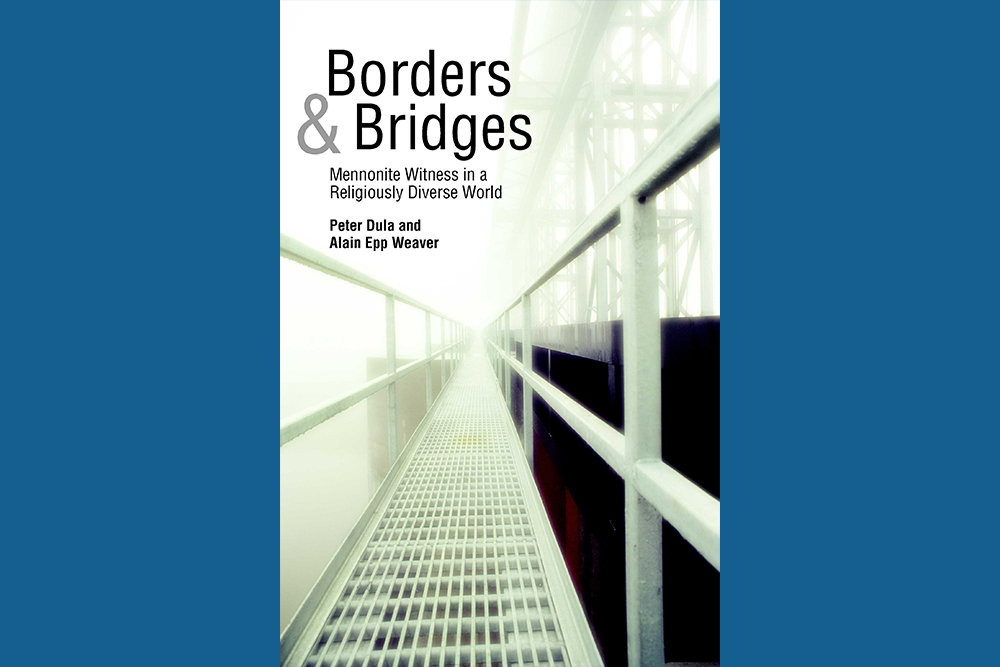As part of its year-long Centennial celebration, Eastern Mennonite University’s Center for Interfaith Engagement will host a roundtable on interfaith collaboration. One focus of the discussion will be on how building bridges of practical interfaith collaboration in relief, development and peacebuilding can embody a vital form of Christian witness.
The event will be from 7-9 p.m. on Thursday, March 22, in Martin Chapel.

“EMU has a long history of interfaith engagement, represented by its diverse student community, institutional commitments to justice and peacebuilding, and many expressions of global and local engagement,” said the center’s director, Professor Timothy Seidel. “Its centennial year provides a good opportunity to reflect on this history as well as look forward.”
The discussion will use as its basis the 10th anniversary of the publication of Border and Bridges: Mennonite Witness in a Religiously Diverse World (Cascadia Publishing House, 2007), edited by Peter Dula and Alain Epp Weaver. Dula is professor of Bible and religion at EMU, while Weaver worked for many years with Mennonite Central Committee in the Middle East, and currently serves as director for strategic planning.
Both Dula and Weaver will attend the roundtable, as well as chapter contributor Gopar Tapkida, a Nigerian peacebuilder and graduate of the Center for Justice and Peacebuilding’s MA in conflict transformation program. Carol Tobin, from Virginia Mennonite Missions, and Israa Alhassani, a steering committee member for CIE’s Interfaith Peace Camp, will also contribute.
The book includes case studies by 10 contributors with experience working for Mennonite Central Committee, a relief, development, and peacebuilding agency of Mennonite and Brethren in Christ churches in Canada and the United States. The essays represent diverse experiences related to how Mennonites have contributed to peacebuilding and reconciliation in multi-religious contexts. Dula’s closing essay offers a theological rationale for interfaith collaboration.
“When it was published 10 years ago, the editors wanted to encourage current Mennonite institutions, whether that was Mennonite Central Committee or mission agencies or colleges and universities, to learn from the rich history of promoting interfaith and ecumenical cooperation,” Seidel said. “Now ten years later, we want to explore what Mennonite interfaith engagement looks like? What lessons have we learned? What relationships have been nurtured?”
The 10 contributors, listed here with the region they originally wrote about, include several EMU alumni: Susan Classen ’79 (Latin America); Roy Hange ’82 (Iran); Jeanne Jantzi ’86 (Indonesia); Chantal Logan (Somalia); Edgar Metzler (Nepal); Gopar Tapkida MA ’01 (Nigeria); Eldon Wagler and Jane-Emile Wagler (Egypt and Syria); Alain Epp Weaver (Palestine-Israel); Randall Puljek-Shank MA ’99 (southeast Europe); and Jon Rudy GC ’01, MA ’01 (India).
The following day, CIE will host an inter-agency consultation, closed to the public, to develop recommendations for congregations and individuals working at interfaith engagement.
This is the third such consultation on the topic, with participants representing Mennonite Church USA’s denominational office; Mennonite Mission Network, Eastern Mennonite Missions; Virginia Mennonite Missions; Christian Peacemaker Teams; the Center for Interfaith Engagement and the Center for Justice and Peacebuilding at Eastern Mennonite University; and Mennonite Central Committee.
